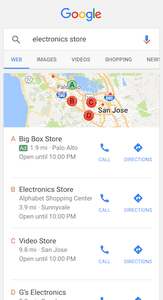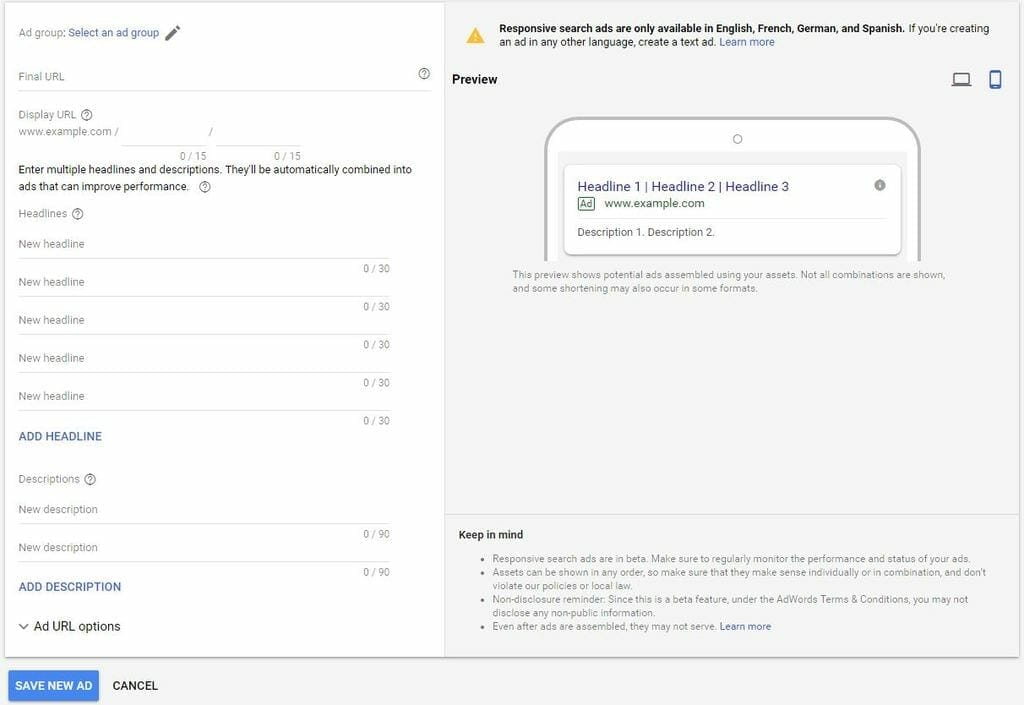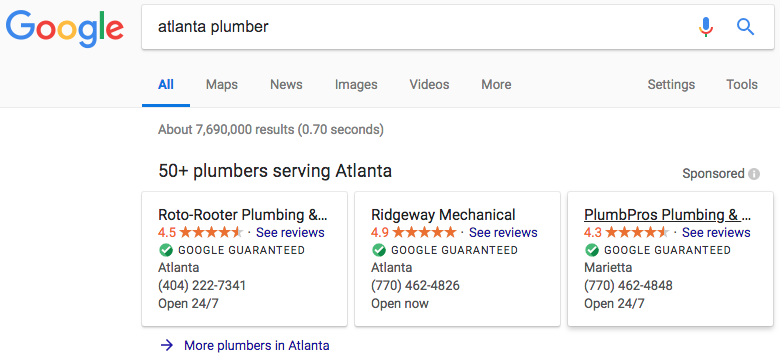Transcript of How Human Connection Elevates Marketing written by John Jantsch read more at Duct Tape Marketing
Back to Podcast
Transcript
This transcript is sponsored by our transcript partner – Rev – Get $10 off your first order
John Jantsch: You’re never gonna get your message across until you understand the problems and the challenges and you empathize with those people that you’re trying to get the message across to.
In this episode of Duct Tape Marketing Podcast, I am visiting with my old friend, Seth Godin. Everybody’s favorite marketer and we’re talking about his new book called, This Is Marketing: You Can’t Be Seen Until You Learn to See.
Hello and welcome to another episode of the Duct Tape Marketing Podcast. This is John Jantsch and my guest today is Seth Godin. He is the author of 18 international bestsellers but I better check ’cause it may have changed by the time-
Seth Godin: It’s 19 now, ding, ding, ding.
John Jantsch: I knew I should have checked. And certainly to be translated in many, many languages, many of you listeners know that Seth’s been on when we talked about Unleashing the Ideavirus, maybe even Permission Marketing if we go back that long. Purple Cow Tribes. I’d run out of time if I list them all. But today we’re gonna talk about This Is Marketing: You Can’t Be Seen Until You Learn to See. So, welcome back, Seth.
Seth Godin: Well, thank you. I think the keyword is, you said, “Another episode.” And your persistent generosity is the secret of marketing. So, bravo.
John Jantsch: Well, thank you very much. And again, I can spend five or six minutes talking about your generosity. But let’s get to the content, shall we? Let’s unpack this first element. Until you learn to see. What does that mean?
Seth Godin: Well, there’s two kinds of marketers. There’s the selfish marketers who are short term, short cutting narcissists. They are the ones who are getting in front of people because they want to market to them. And there’s the other kind of marketer. The long term player, the one who’s making a difference, who’s marketing with people. But you can’t market with them until you see them, until you know who they are, until you have the empathy to want what they want or at least, to help them get what they want. And too often, we’re in such a hurry ’cause we feel like we’re drowning that we forget to offer other people, a life vest.
John Jantsch: Yeah. And I work with lots and lots of very small businesses who, they wanna cut down trees and they wanna repair plumbing and things like that. And marketing is actually sort of a nasty thing that they feel like they have to do sometimes and I think the real challenge for a lot of folks like that is that they kinda just copy what they see so many other people doing even if it is wrong. I mean, how do you take somebody like that, that is essentially not a marketer, who says, “I’ve gotta market” but, you know, all the examples, that are, but, not all, but a lot of the examples that I see are teaching me the wrong things.
Seth Godin: Well, first I’d say, they are marketers. They might not be marketing on purpose but if you’re out in the world trying to make a change happen of any kind, you’re marketing, that’s what marketers do. And they, you know, I got a piece of spam from somebody, a week ago. It said, “Hi, I’m an intern from BYU. Can you please answer this survey for my company?” And there were so many elements of it that were clearly spam. And I had nothing better to do, so I wrote back and I said, “You know, you don’t have to do work you’re not proud of even when you’re an intern.” That it begins a pattern of saying, “Well, I’m just doing my job.” You don’t have to do that. You could do work that matters instead.
And the kid was sort of stunned and wrote me back a nice long note which was gratifying but my point was, if you wanna be a plumber, if you wanna be a tree surgeon, the fact is, you will be judged and you will be judged on how you treated our precious attention and you will be judged by how you kept your promises. And you will always be able to find someone who will go lower than you. Always. You wanna race to the bottom because the problem with racing to the bottom is you might win. The alternative is to say, “I know how I would like to be treated. I know how I would like to be seen and that’s the way I’m gonna treat other people.”
John Jantsch: You make it sound so logical.
Seth Godin: Well, you know, I’m not trying to make it sound easy but we see it everywhere. So, like, for example, the heating and boiling guy, the boiler repair guy came to my house yesterday. And even though we’d been working together for years ’cause stuff breaks, he insisted on putting booties on before he came into the house. And I said, “You don’t have to put booties on. We’re just going straight to the basement.” He said, “No, no. It’s a habit. This is the way I do it and it’s what I ask people to do before they come into my house.” And, so the book is basically a metaphor for, “Put your booties on.”
John Jantsch: So, I’ve believe at least, a great deal of this book is drawn from a project that you’ve been involved in for a few years, The Marketing Seminar.
Seth Godin: That’s right. It’s 6,000 people have taken this online, workshop takes about three months to go through and I had the privilege of watching people do it. Because, you know, you’re sitting like a pharmacist up at the top and you can see everything in the store. And, so I could see where people were getting stuck. I could see what resonated. So, once it came time to write the book, it wasn’t particularly difficult to write because I just built it and lived it for two years.
John Jantsch: And there were a lot of questions, right? And I’m assuming that you learned a great deal from not just where people got stuck but just the questions they asked and their answers.
Seth Godin: That’s right. We saw people have their lives changed and their businesses change because they were putting this into practice. And that’s what I do, I’m a marketer, I make change happen and I’m a teacher. So, seeing the lights go on, that’s what drove me to write the book. As I said, there’s a lot of people who will pay 600 bucks to take a seminar but I bet you, if I can give them this handy package, not only will they read it but they’ll share it with their peers.
John Jantsch: Because I think that’s one of the real challenges. In the last five years, you know, there’s 5000% more courses out there, from people and I think most course makers, seminar makers would agree that the real challenge is getting people to actually do it. And look at the way you structured this project, it really does compel people to complete it, doesn’t it?
Seth Godin: Well, so, yeah, I think it’s really important to distinguish between online courses and online workshops. Online courses are everywhere and I’ve made some. It’s a bunch of videos, it’s a different way to absorb content. And they’re fun to make but in my experience, they don’t lead to profound change. Change comes from when you actually do the work. So, what we do with these various workshops and seminars, you know, the altMBA has a 96% completion rate and that’s because it’s expensive and time gated and there’s a coach who’s watching you all the time. And there’s a peer group and a mastermind group.
So, people would missed if they were gone. And at the other end of the spectrum are self paced, come and go as you please kinda MOOCs. I think the opportunity we have, if we care enough to level up, is to put ourselves into a position where when it gets hard, and education always gets hard, we don’t quit. And so, for some people, that’s just get an audiobook instead of the regular one. ’cause the audiobook keeps turning the pages whether you want it to or not.
And for other people it’s, get a coach or get into a workshop where there are coaches because that is what they need to move forward. But, one thing we know for sure, if you’re over 25, there are no tests and there no grades. So, we need a better incentive than that to learn things.
John Jantsch: So, I’m curious. The etymology of MOOC. I’ve not actually heard that one before.
Seth Godin: Oh, it all started with this idea of the massive online course. What the second ‘O’, open, Massive Open Online Course. So, open because you don’t have to apply to get in. The famous one was the one out of Stanford on artificial intelligence. And a 105,000 people took it. And, what the professor who ran it said was that the 100 people who took it and got an A+ were better than any of the students at Stanford who took it. What he didn’t mention is that, 96,000 people in the course, dropped out.
John Jantsch: Or never started.
Seth Godin: Perhaps.
John Jantsch: So, I get asked this question a lot because I’ve been doing this a long time and you’ve probably been doing it longer than me. What’s changed the most about marketing? I always love people’s answers to this.
Seth Godin: What’s changed is really clear. Which is the marketer used to buy attention, cheap, that marketing was a bargain, that you spend a 100 dollars, you’d make 200. And the big change is attention is not cheap anymore. And as a result, marketers are racing to buy every little shortcut they can find and they’re getting trash attention, they’re getting trash clicks, they’re getting bots and trolls showing up on their doorstep.
So, Procter & Gamble and the big marketers can no longer buy their way to a new brand. It hasn’t been done in 10 years, it’s over. On the other hand, smart marketers are thinking like direct marketers now. They pay a lot for a little bit of attention but they take care of it and as they take care of it, they turn it into something valuable.
John Jantsch: I’ve been a fan of as I know you have as well. Kevin Kelly’s Cool Tools.
Seth Godin: Sure.
John Jantsch: That he’s been doing for, probably coming up on 20 years and I know you’ve been a guest on there. And I found, you mentioned this in the book and I found actually an episode where you talk about Penguin Magic and I actually have taken note of the fact that you like magic shops, don’t you?
Seth Godin: Well, I don’t like the old kind anymore. Penguin Magic has spoiled me. But yes, I grew up going to magic shops. I love the tension of, “I just saw something, it’s impossible but of course the laws of physics apply so how could it be impossible? I need to know how it’s done. Oh, here’s some money. Now it’s mine.”
And there aren’t very many things in our life where we can get that cycle with no side effects for ten bucks in five minutes. It’s a thrill.
John Jantsch: And there actually are countless cases throughout history where people have actually killed other magicians and things to find their secret, haven’t they?
Seth Godin: I hope that’s not happening lately. If it is, we should tell Penn & Teller before it’s too late.
John Jantsch: So, there’s a bit in this book, current book about going out of business sales. And what they kinda do to us and maybe how they hurt us as marketers. You, kind of wanna expand on that?
Seth Godin: Well, the challenge that we have as marketers is everything that we would do to make something work in the short run isn’t what we should do in the long run. That is not true for any other profession. That what’s good for a surgeon in the short run is good for a surgeon in the long run. Add it up, keep going. The problem that marketers face is that the stunts and the shortcuts and the hustle, I hate the hustle most of all, is tarring us with this paint, this tar that won’t let go. And that’s why if I could invent a new word for marketing, I would.
Because, the good kinda marketing which is the marketing you talk about and that I talk about and the marketing that works doesn’t involve any of that hustle. But, the internet has brought the hustle to the fore and I think we’ve gotta figure out how to walk away from it as fast as we can.
John Jantsch: One of the words that you, I think are proposing, maybe that takes the place of marketing, is this idea of developing an empathetic posture. How do we do that?
Seth Godin: So, what’s practical empathy? It’s a simple idea which is, “You know something I don’t know. You believe something I don’t believe. You want something I don’t want. And you care about things I don’t care about.” So, if I’m gonna engage with you, sell to you, serve you, do business with you, either, I need to force you to think the way I think or I need to have the humility and the generosity to accept the fact that you think, the way you think and maybe I can help you.
But, too often, particularly small business people insist that they’ve worked very hard to get to where they are and they are right. And they’re not willing to move an inch toward what somebody else wants or believes. Or, it feels manipulative. And I don’t think it’s manipulative. I think that, if for example, you are somebody who sells draperies and blinds and you sell them in the suburbs, an upper income suburb, you might be the kind of person who doesn’t have any drapes and blinds in your house. You might be the kind of person that would just go to Kmart or Home Depot and buy the cheapest thing.
But your customer, she wants something that’s gonna make her feel special. And she’s willing to spend 800 dollars for it. If you can’t go to where she is, then you can’t help her. And if you think that where she is, is she wants to see a spreadsheet, an RFP, a comparison of A versus B, you’re not being very empathic. That what we get to do is to go to where people are and help them see what they wanna see.
John Jantsch: I read an article the other day that said from 2011 to 2017, 5000 marketing technology companies, apps, tools, whatever you wanna describe ’em have come on the scene. Is that phenomenon making this harder to do marketing the right way?
Seth Godin: Wow, I love that stat. I would have guessed it was even more than that. The thing is, the programmatic, the idea that you don’t know where your ads are running and a system is busy buying and selling everything behind the scenes makes a certain kind of of marketer happy because it lets him or her off the hook and it lets you buy a certain kind of demographic scale really fast. It’s hands free, it’s not human.
And particularly for a small organization, we need to run away from this as fast as we can. You cannot outdo Hyatt Hotels. You cannot outdo Google at this game. You just can’t, you have no chance. It’s like trying to win at the stock market by being a day trader. That, the place where you can win, where you have an enormous unfair advantage is that you can look a human being in the eye and you can say, “I made this.” And you can say, “I see you.” And you can say, “How will we together make something work?” That is where 10,000 times more than all this crazy software.
John Jantsch: Yeah, there are lot of small businesses that we work with, you know, that advertising kinda becomes a trap because it kinda works. But the bad part about it is then they don’t build a website that works and they don’t write content that works and they don’t do the things that I think, they long term are going to make or break their business.
Seth Godin: Yeah, let me just do a quick Google math so that people understand why Google is one of the most valuable companies in history. If you buy a Google ad, a Click for six dollars, knowing that it’s worth 20 dollars, that every time someone clicks, you’re gonna, on average, make 20 dollars in profit and you’re paying six, that’s thrilling.
But then your competition comes along and buys that Click for seven. So the question is, should you pay eight? The answer is, probably and an auction ensues until it’s at 19. Now, at 19, should you pay 20? Well, some people will say, “Yes, because I don’t want my competitor to get this person.” Some people will say, “No, that’s crazy.”
But, either way, at 19 dollars, here’s what’s happening. The person that did all the hard work, who makes the product, who does the warranty, who built everything makes a dollar and Google makes 19 dollars. Now, multiply that by every product and service sold by Clicks on Google and now you know what’s going on. They’re clearing the table of all the profit in every industry that touches them.
John Jantsch: And it’s, it’s gotten worse. The local service ads are making them actually be part of the transaction now, not just a click. But, you sold 4000 dollars, great, I get a piece of that. So, yeah, I think that trend’s not going away. So, stories are hot. They’re a big part of this book. People talk about them now. 15 years ago, people thought they were silly but now they talk about them. But I still don’t see many people doing or getting this idea of stories. How do you make storytelling a big part of your marketing?
Seth Godin: Well, this is another word that’s getting in the way, right? Because storytelling doesn’t mean “Once upon a time.” And “Lived happily ever after.” Story could be, what kind of handshake do you have? Story could be, is your office in a strip mall or in a fancy building? Story could be, when I look at the people who work for you on your website, do I see people who look like me?
These are all stories, stories in the sense that they’re symptoms and symbols that we use to guess about further behavior and meaning. And so, we all live stories and we can build those stories on purpose or we can let them happen to us. So, one way to think about the value of a brand or a story is this, if Nike opened a hotel and that’s all you knew, is it Nike has a hotel? I’m guessing, with your eyes closed, you could imagine a whole bunch of things about that hotel and you’d be right.
On the other hand, if Hyatt or Hilton made a pair of sneakers, you’d have no clue what they would be like. None. That’s because Nike has a story and Hilton and Hyatt do not.
John Jantsch: Great example. So, [inaudible]. We’re getting towards the end, so, here’s a softball you can hit out of the park for me. I don’t really think people want what we sell. What do they actually want?
Seth Godin: Right. They don’t want what we sell at all. They want the change and the status that it offers. They want belonging, they want security, they want to feel like they are part of something. If the Grateful Dead had never been invented, they wouldn’t have invented the Grateful Dead. But they would have invented something that made them feel the way the Dead did.
John Jantsch: So, you just gave me an example but my last question was gonna be, is there a company or two that you wanna point to and say, “Hey go check out what these people are doing because they’re doing it right.”?
Seth Godin: Here’s what I would say. Think, right now of a logo that you admire. Let’s say, you’re talking to a designer. Think of a logo. I’m going to bet you, 10 to 1 odds, that the logo you thought of is not a pretty logo but is in fact something that adorns a brand that you care about.
This brand you care about, why do you care about it? Why do you pay extra for it? Why do you cross the street to engage with them? So, you get to pick the example. I don’t need to. Because if there’s a brand you care about, it is a brand you care about because of the ideas that are in this book.
John Jantsch: Yeah, and that’s a great lesson because everybody has a brand or two that they care about so then you can personalize that and turn it into a learning lesson. Great, great advice.
So, Seth, what kind of people are gonna know, that are gonna be able to find This Is Marketing everywhere but is there anything you wanna share in terms of how they would connect with you, how they’d find out, maybe about joining the Marketing Seminar?
Seth Godin: I made a bonus page at Seths.blog/tim which stands for This is Marketing and I’ve got a video there and some bonuses and links to all sorts of juicy stuff as well.
John Jantsch: Well, once again, I really appreciate you stopping by and sharing your thoughts. Another great book. Congratulations and hopefully we’ll run into you soon, out there on the road.
Seth Godin: I hope so. Always a pleasure.
 This week on the Duct Tape Marketing podcast, I welcome back
This week on the Duct Tape Marketing podcast, I welcome back 

